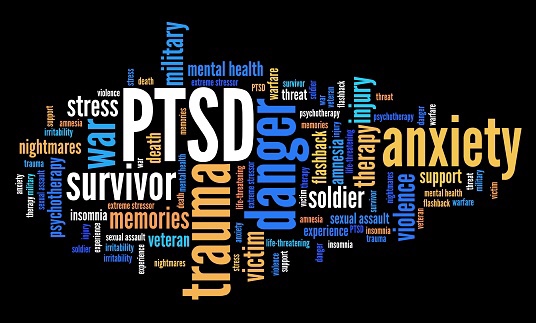Post-Traumatic Stress Disorder
At the IAIABC Annual Convention in Williamsburg, VA, Celena Thompson, clinical psychologist with the Hampton VA Medical Center discussed how the VA diagnoses PTSD. With more states considering PTSD legislation under workers’ compensation, it is important for legislators and regulators to consider coming up with rules around the diagnosis of this condition.
The VA’s diagnostic criteria for PTSD is as follows:
Criterion A: The person was exposed to death, threatened death, actual or threatened serious injury or actual or theatened sexual violence in the following ways:
- Direct exposure.
- Witnessing the trauma.
- Learning that a relative or close friend was exposed to the trauma.
- Indirect exposure to aversive details of the trauma, usually in the course of professional duties. (first responders).
Under their rules, if someone was not exposed to a Criteria A threshold, they cannot be diagnosed with PTSD.
Examples of Criterion A exposures include:
- Combat exposure.
- Sexual assault.
- Serious vehicle accident.
- Childhood sexual or physical abuse.
- Interpersonal violence.
- Repeated exposure to severe physical injuries (first responders).
- Witnessing suicide of a loved one.
Criterion B: Intrusive symptoms (one or more of these symptoms is required for diagnosis)
- Unwanted upsetting memories.
- Nightmares.
- Flashbacks.
- Emotional distress after exposure to traumatic reminders.
- Physical reactivity after exposure to traumatic reminders.
- Symptoms are experienced as involuntary, recurrent, unwanted and intrusive. Symptoms are not volitional or the product of ruminative thought patterns.
Recurrent symptoms usually include sensory, emotional or physiological behavioral components.
Criterion C: Avoidance of the trauma-related stimuli after trauma (one required):
- Trauma related thoughts or feelings.
- Trauma related reminders.
Examples of avoidance behavior includes substance abuse, binge eating, social isolation, compulsive behaviors, emotional suppression, and cognitive avoidance.
Criterion D: Negative thoughts or feelings that began or worsened after the trauma in the following ways (two required):
- Inability to recall key features of the trauma.
- Overall negative thoughts and assumptions about oneself or the world.
- Exaggerated blame of self or others for causing the trauma.
- Negative affect (emotions).
- Decreased interest in activities.
- Feeling isolated (emotions).
- Difficulty experiencing positive affect.
Examples of Criterion D includes:
- Belief that the world is totally unsafe.
- Belief that no one can be trusted.
- Belief that “I am unloveable.”
- Belief that “I only deserve bad things.”
- Belief that “I should have known this would happen.”
Criterion E: Trauma related arousal and reactivity that began or worsened after the trauma in the following ways (two required):
- Irritability or aggression.
- Risky or destructive behavior.
- Hyper vigilance.
- Heightened startle reaction.
- Difficulty concentrating.
- Difficulty sleeping.
Examples of Criterion E behaviors include:
- “Head on a swivel.”
- Scanning and patrolling behaviors.
- Keyed up or on edge/cannot relax.
- Road rage/unsafe driving.
- Trouble focusing on work/school assignments.
- Aggressive responding to minimal provocation.
- Self injurious or suicidal behavior.
- Disrupted sleep patterns.
Criterion F: Symptoms last for more than one month. (required)
Criterion G: Symptoms create distress or functional impairment. (required)
Criterion H Symptoms are not due to medication, substance use, or other illness. (required)
It should be noted that the percentage of people that experience trauma and develop PTSD is relatively low. Most people are able to cope with the trauma and it does not impact them long-term.


